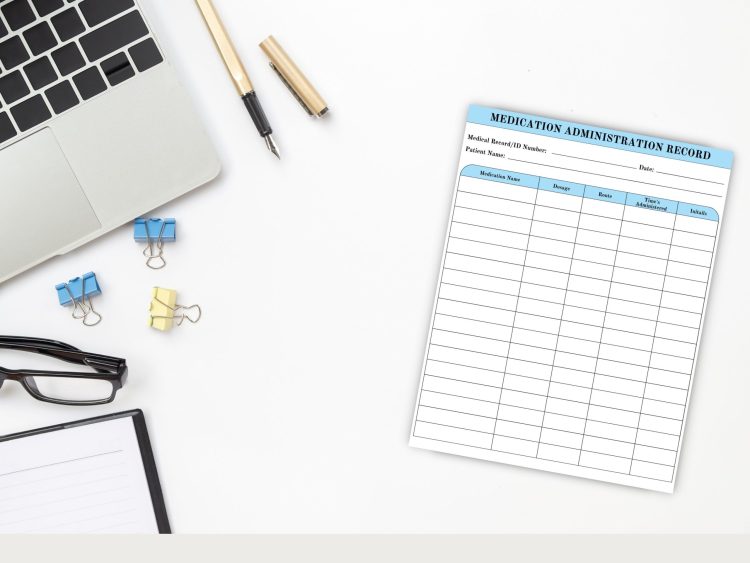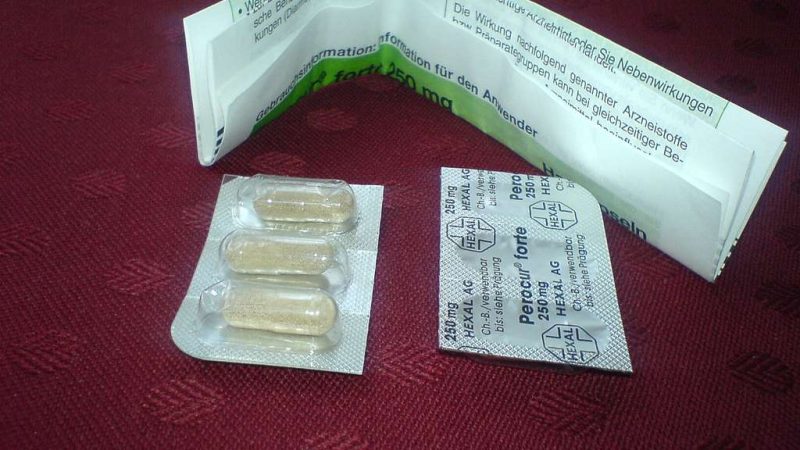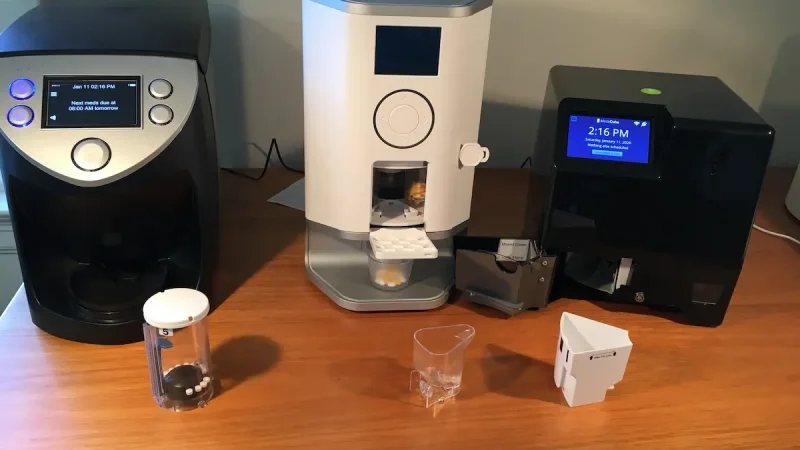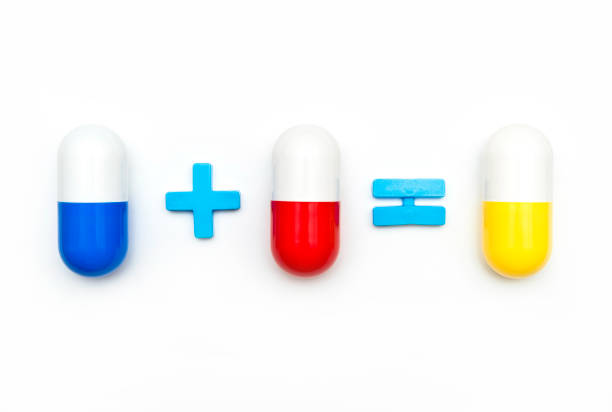Medication Tracker Template: A Comprehensive Guide to Managing Your Medications

Managing medications effectively is essential for maintaining good health, particularly for individuals with chronic conditions or those taking multiple prescriptions. A medication tracker is a helpful tool that can assist in monitoring your daily medication schedule, dosage, and any side effects you may experience. In this article, we will explore the importance of using a medication tracker, the key elements that should be included in a template, and tips on how to stay on top of your medications.
The Importance of Medication Tracking
Before diving into the specifics of creating or using a medication tracker template, it’s important to understand why it’s such a crucial tool. Medication adherence, or the act of taking prescribed medications correctly, can be challenging for many people. With complex regimens, multiple doses, and various medications, it’s easy to forget a dose or take the wrong medication at the wrong time. This can result in complications, delayed healing, or ineffective treatment.
Using a medication tracker provides a simple yet effective way to:
- Prevent Medication Errors: A tracker helps ensure that you take the right medication at the correct time and in the right dosage. This is particularly important when managing multiple medications or complex treatment plans.
- Track Side Effects: Many medications come with potential side effects. A tracker allows you to note any adverse reactions and share them with your healthcare provider, who can adjust your treatment accordingly.
- Improve Communication with Healthcare Providers: When you have a detailed log of your medication use, you can share it with your doctor during visits, helping them make more informed decisions about your care.
- Stay Organized: A tracker helps keep your medication regimen organized, so you don’t miss doses or take them incorrectly, reducing the likelihood of complications.
- Maintain Consistency: Regularly using a tracker ensures that you take your medications as prescribed, fostering consistency in your treatment plan.
Key Elements of a Medication Tracker Template
Whether you choose to use a paper template or a digital version, certain key elements should be included to maximize the effectiveness of your tracker. Here are the main sections to consider:
1. Medication Name
Each medication you take should be clearly listed by name. This is particularly important if you take multiple prescriptions, as the medication’s name will serve as a quick reference point.
2. Dosage and Strength
For each medication, include the prescribed dosage and its strength (e.g., 10 mg, 50 mg, etc.). This ensures that you take the correct amount each time and prevents confusion, especially when switching between different medications or when refilling prescriptions.
3. Time of Day
The time at which you need to take each medication is critical. Whether it’s once a day, twice a day, or several times a day, having clear instructions on the time can help you stick to your regimen. Some people prefer to take medications at specific times in the morning or evening, so a reminder system within the tracker can be beneficial.
4. Frequency
Clarifying the frequency of your medications is crucial to ensure that you are not taking too much or too little. For instance, some medications may be taken three times a day, while others may be taken once a week. A tracker should make these instructions clear.
5. Special Instructions
Certain medications require special instructions for proper use, such as whether they should be taken with food, before meals, or at bedtime. A medication tracker should include a space to note these instructions, as well as any relevant instructions on how to store the medication (e.g., “store in a cool, dry place”).
6. Refill Reminders
Medications often require refills, and it’s easy to forget when you need one. Including a section for refill reminders can help you stay ahead of your medication needs and avoid running out.
7. Side Effects
Tracking any side effects you experience can be incredibly valuable. This section should allow you to log the date and description of any adverse reactions, such as dizziness, nausea, or headaches, and provide space for noting the severity of each symptom.
8. Doctor’s Notes or Changes
When you see your doctor for follow-up appointments, they may adjust your treatment plan. A section dedicated to keeping track of any changes in your medications, new prescriptions, or dosage adjustments is helpful for keeping everything in one place.
9. Medication Start and End Dates
Some medications are taken for a limited period, such as antibiotics or certain treatments. Including start and end dates for each medication helps you know when a course of treatment is complete and prevents unnecessary prolongation.
10. Next Doctor’s Appointment
Recording the date and details of your next doctor’s appointment can help ensure that you don’t forget important check-ups or prescription refills.
Types of Medication Tracker Templates
There are various formats for medication tracker templates, each designed to meet different needs and preferences. Here are some common types of templates that can be used:
1. Paper Medication Tracker
A paper tracker is simple to use and doesn’t require technology. Many people prefer paper because it’s tangible and easy to carry with them. You can create your own paper tracker or find printable templates online that you can fill out by hand. The key to a good paper tracker is its layout—ensure that it is easy to follow and that there is enough space to add all relevant information.
2. Digital Medication Tracker (Mobile Apps)
Many people prefer using a digital format for their medication tracker, as mobile apps can send reminders and alerts, making it less likely to forget a dose. Some popular apps for tracking medications include:
- Medisafe: This app allows you to enter your medication details and set reminders for each dose. It also tracks refill dates and provides a log of your medication history.
- Pillboxie: A visual app that allows you to set reminders for your medications, Pillboxie makes it easy to see what medications need to be taken at a glance.
- MyTherapy: In addition to medication tracking, MyTherapy offers features for tracking your mood, symptoms, and side effects, allowing you to maintain a comprehensive record of your health.
- CareZone: This app is ideal for families or caregivers. It allows you to track medications, set reminders, and even share the information with others.
3. Spreadsheet or Google Sheets Tracker
A digital spreadsheet (such as Google Sheets or Microsoft Excel) can be a great option for users who prefer creating a custom layout. With a spreadsheet, you can use functions like conditional formatting or automatic reminders. This format is flexible, and you can easily share it with your healthcare provider or a family member. The key benefit is the customization; you can make it as detailed or simple as you need.
4. Medication Management Books
Some people prefer more formal, physical records, such as a dedicated medication management book. These books often contain pre-designed templates for tracking medications and are available for purchase at medical supply stores or online. A medication management book is great for people who want a detailed, organized system with easy-to-find sections.
How to Stay Consistent with Your Medication Tracker
Staying consistent with your medication tracking is key to its effectiveness. Here are some tips to ensure you use your tracker consistently and correctly:
1. Set Reminders
If you’re using a digital tracker, take advantage of reminder features to ensure you never miss a dose. Set reminders for the exact time you need to take your medications, or even an hour or two before, so you have time to prepare.
2. Create a Routine
Try to integrate your medication-taking process into your daily routine. Whether it’s taking your medications with breakfast or before bed, establishing a consistent routine can help you remember to track your medications.
3. Involve a Caregiver or Family Member
If you have trouble remembering to take your medications, involving a caregiver or family member can provide extra support. Share your medication tracker with them, so they can help keep you on track and ensure you are following your treatment plan.
4. Review Your Tracker Regularly
Make it a habit to review your medication tracker regularly. This can help you spot patterns, track side effects, and identify any medications that are missing or out of date.
5. Update the Tracker as Needed
Medications change over time, and so will your treatment plan. Be sure to update your tracker when your medications change, when you get new prescriptions, or when you experience any side effects that need to be noted.
Conclusion
A medication tracker is an essential tool for managing your health and ensuring that you follow your prescribed treatment plan accurately. Whether you opt for a paper template, digital app, or spreadsheet, using a medication tracker can help prevent medication errors, monitor side effects, and improve your overall health. By including key elements like medication name, dosage, time, special instructions, and side effects, you can create a comprehensive tracking system that helps you stay organized and consistent with your medications. By integrating reminders, routines, and regular updates, you can maximize the effectiveness of your medication tracker and take control of your health.





